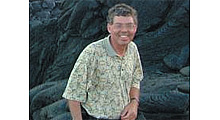
Doug Lung
In response to a request for declaratory ruling from Engineers for the Integrity of Broadcast Auxiliary Services Spectrum, the FCC Wireless Bureau confirmed that “After careful review of the issues and the information submitted, we find that when a transmitted emission continues to be frequency modulated and is contained within the bandwidth limits specified for frequency modulation, and when there are no modifications to transmitter circuitry, a change in the emission designator is not necessary.”
Stations have found they can use devices like Nucomm's Analog Coder 2 to convert an ASI or SMPTE 310 stream into an analog signal that can be applied to an existing analog microwave link and decoded on the other end to recover the digital data. The transmitted signal is still FM, and EIBASS demonstrated that the spectra of a signal from an FM video microwave using codecs had the “…signature 'triangular' spectral shape associated with an analog transmission as opposed to the 'rectangular' spectral shape seen with using QAM or COFDM.”
This should be good news to broadcasters using these analog codecs, as conversion of a microwave link from analog to digital is a major change requiring a new public coordination. The interference criteria for digital links are different than that for analog links. I have seen cases where it’s impossible to coordinate digital operation on a frequency previously coordinated for analog use.
The professional video industry's #1 source for news, trends and product and tech information. Sign up below.

Doug Lung is one of America's foremost authorities on broadcast RF technology. As vice president of Broadcast Technology for NBCUniversal Local, H. Douglas Lung leads NBC and Telemundo-owned stations’ RF and transmission affairs, including microwave, radars, satellite uplinks, and FCC technical filings. Beginning his career in 1976 at KSCI in Los Angeles, Lung has nearly 50 years of experience in broadcast television engineering. Beginning in 1985, he led the engineering department for what was to become the Telemundo network and station group, assisting in the design, construction and installation of the company’s broadcast and cable facilities. Other projects include work on the launch of Hawaii’s first UHF TV station, the rollout and testing of the ATSC mobile-handheld standard, and software development related to the incentive auction TV spectrum repack. A longtime columnist for TV Technology, Doug is also a regular contributor to IEEE Broadcast Technology. He is the recipient of the 2023 NAB Television Engineering Award. He also received a Tech Leadership Award from TV Tech publisher Future plc in 2021 and is a member of the IEEE Broadcast Technology Society and the Society of Broadcast Engineers.
